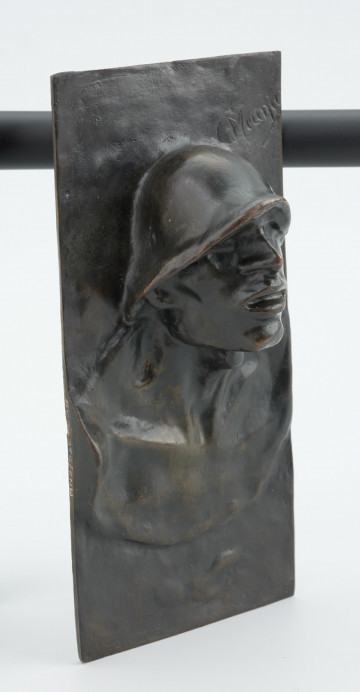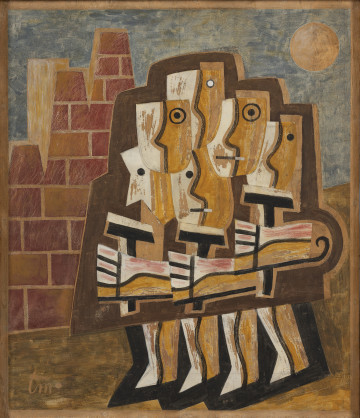
Male portrait
1885
National Museum in Szczecin
Part of the collection: European classics of modernity
The Industrial Revolution initiated in the 18th century introduced new subjects to the history of Western painting. Alongside allegorical compositions modifying modern iconographic programmes, views of large-scale transformed landscapes, factory interiors and genre scenes set in the open air or in architecture appeared. In accordance with the geographical dynamics of industrialisation processes, the first paeans to modern work were created in Great Britain, where the classicist Joseph Wright of Derby is considered the pioneer of the genre. The same era saw the work of the Swede Pehr Hilleström the Elder, the Württemberg Friedrich Matthäus Weber, the Walloon Léonard Defrance and the Frenchman Louis Jean-Jacques Durameau. The World Exhibitions, initiated in the middle of the next century and conceived as an economic showcase for all nations, coincided with the growing popularity of the realism movement. The Parisian Ignace-François Bonhommé followed modernisation with the zeal of a documentalist. However, the majority of the representatives of the trend, headed by its founder Gustave Courbet, included in their accounts a pessimistic assessment of the fate of the metropolitan proletariat. In German countries, after Biedermeier vedutas by Christian Philipp Koester, Carl Blechen, Karl Eduard Biermann and Alfred Rethel, the most renowned were realistic paintings by Adolph von Menzel - the author of the most famous image of a factory in the history of the National School. His Walcownia żelaza [The Iron Rolling Mill] (Eisenwalzwerk) from 1872-1875 echoed most of Erich Mercker's compositions. This civil engineer, educated and active in Munich, became in the 1920s a sought-after painter combining the effects of impressionism and expressionism with pastoso technique. During the Third Reich, when carrying out large decorative commissions, Mercker used a traditional convention, which gave the paintings an overtone of optimistic propaganda falsifying reality. In smaller formats, he preserved the characteristic dark colour palette, thick texture and deformation of the depicted industrial landscapes and interiors.
Szymon Piotr Kubiak
Author / creator
Dimensions
cały obiekt: height: 66 cm, width: 86 cm
Object type
painting
Creation time / dating
Creation / finding place
Identification number
Location / status

1885
National Museum in Szczecin

5250 p.n.e. — 5000 p.n.e.
National Museum in Szczecin

1947
National Museum in Szczecin
DISCOVER this TOPIC
Museum of King Jan III's Palace at Wilanów
DISCOVER this PATH
Educational path